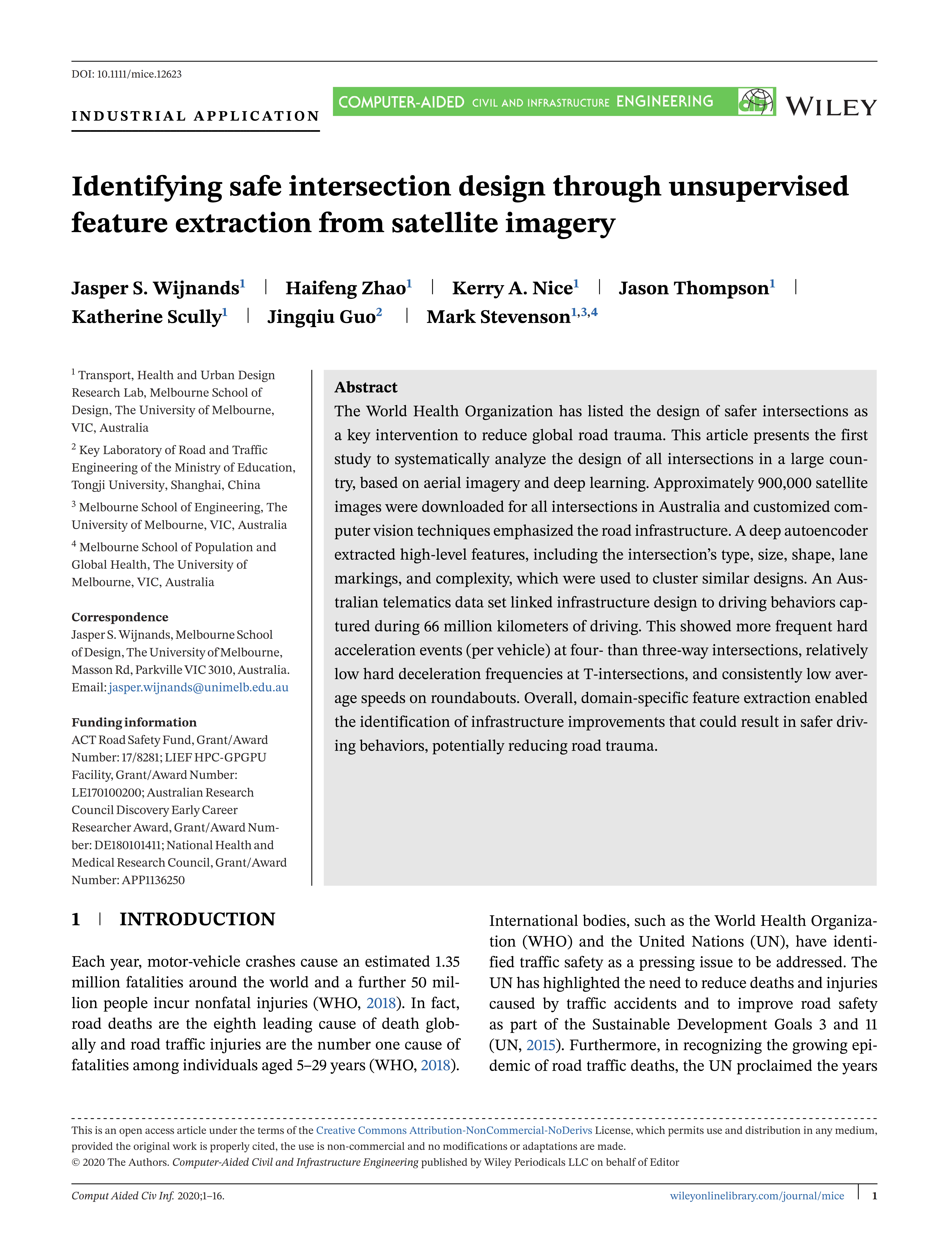Identifying safe intersection design through unsupervised feature extraction from satellite imagery
The World Health Organization has listed the design of safer intersections as a key intervention to reduce global road trauma. This article presents the first study to systematically analyze the design of all intersections in a large country, based on aerial imagery and deep learning.
Jasper S. Wijnands 1, Haifeng Zhao1, Kerry A. Nice1, Jason Thompson1, Katherine Scully1, Jingqiu Guo2
, Mark Stevenson 1,3,4
Computer‐Aided Civil and Infrastructure Engineering (Open Access)
Abstract
The World Health Organization has listed the design of safer intersections as a key intervention to reduce global road trauma. This article presents the first study to systematically analyze the design of all intersections in a large country, based on aerial imagery and deep learning. Approximately 900,000 satellite images were downloaded for all intersections in Australia and customized computer vision techniques emphasized the road infrastructure. A deep autoencoder extracted high‐level features, including the intersection's type, size, shape, lane markings, and complexity, which were used to cluster similar designs. An Australian telematics data set linked infrastructure design to driving behaviors captured during 66 million kilometers of driving. This showed more frequent hard acceleration events (per vehicle) at four‐ than three‐way intersections, relatively low hard deceleration frequencies at T‐intersections, and consistently low average speeds on roundabouts. Overall, domain‐specific feature extraction enabled the identification of infrastructure improvements that could result in safer driving behaviors, potentially reducing road trauma.
Author Affiliations
1 Transport, Health and Urban Design Research Lab, Melbourne School of Design, The University of Melbourne, VIC, Australia
2 Key Laboratory of Road and Traffic Engineering of the Ministry of Education, Tongji University, Shanghai, China
3 Melbourne School of Engineering, University of Melbourne, VIC, Australia
4 Melbourne School of Population and Global Health, The University of Melbourne, VIC, Australia
Citation
Wijnands JS, Zhao H, Nice KA, Thompson J, Scully K, Guo J, Stevenson M. Identifying safe intersection design through unsupervised feature extraction from satellite imagery. Comput Aided Civ Inf.2020;1–16. https://doi.org/10.1111/mice.12623
